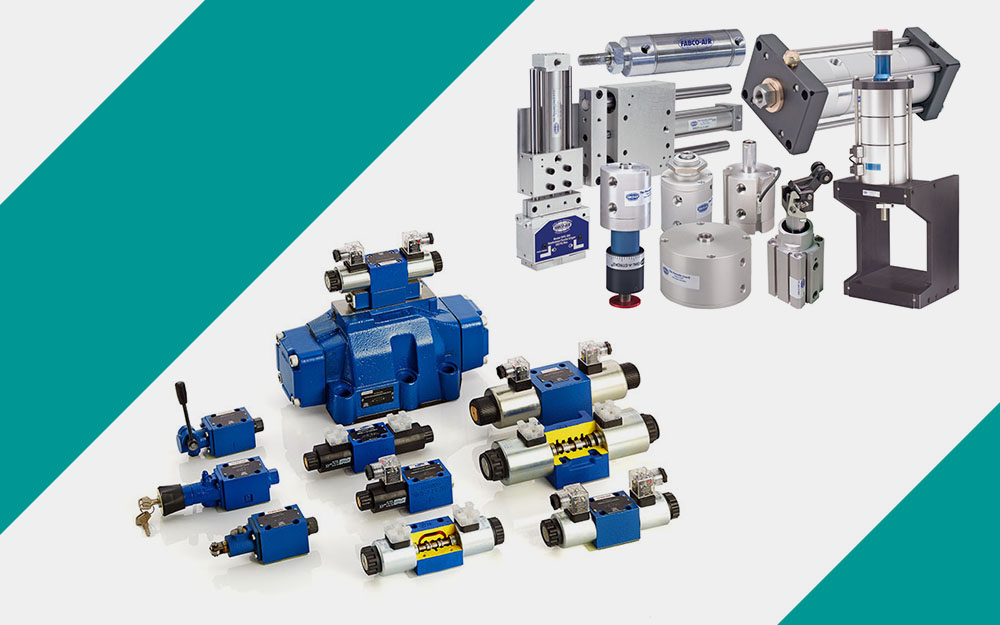What makes hydraulics and pneumatics different from each other? Both realms are two slightly different versions of the same technique of using fluid molecules to transmit controlled forces to achieve work. Both hydraulic and pneumatic systems use the same two common actuators; cylinders to create linear force and motors to create rotational force. In a lot of cases, these actuators can be exchanged with their colleagues, albeit with a reduction in pressure if you’re using an air component in a hydraulic system.
The fundamental difference between the two systems is in the media themselves. Pneumatics obviously uses air as the force transmission medium, while hydraulics uses liquid to transmit force. I’m just as guilty as the next dude in over-generalizing when I describe the hydraulic medium as fluid. It’s not incorrect to say hydraulic fluid, but also you wouldn’t be incorrect to say pneumatic fluid either. Liquid and gas are both a fluid in that they both take the shape of their container and their molecules will flow freely amongst each other.
The functional difference between the two systems is defined by the nature of a gas compared to the nature of a liquid. Air is compressible and oil is not. Actually, oil does compress at the rate of half percent per thousand PSI, but for the sake of simplicity, we say it is incompressible. As well as being compressible, air is also elastic. It can thin itself out and be at a pressure lower than what is in the atmosphere, and then spring back to a state of equilibrium to ambient pressure.
Fluid or oil in a hydraulic system generally maintains the same fluid consistency, and is predictable under various conditions. The only time you have a spongy hydraulic system is when air bubbles are trapped in the oil. Otherwise, oil flows smoothly and hydrostatically in and through all accessible areas of the hydraulic system, but with some exceptions too involving to discuss here.
The resulting differences – in a nutshell – are that pneumatic systems are snappy and quick, as they flow molecules with little resistance through valves and actuators. Because of the difficulties in compressing and controlling air, pressure is limited to 150 PSI on the upper end of the pneumatic spectrum.
On the flipside, hydraulic systems can pack atoms together at pressures upwards of 10,000 PSI, and can smoothly move gargantuan loads with ease. However, the mass of oil itself makes it more difficult to move around, causing backpressure related problems from excessive flow through all the passages, orifices and drillings of a hydraulic system. Air systems can see problems related to backpressure, but the result in that is just reduced flow because of reduced “potential.” Hydraulic oil doesn’t compress, so if a pump is flowing, it has to flow somewhere – all of it. Energy can be wasted just in the process of flowing, even before any useful work is achieved.
The other major difference between hydraulics and pneumatics is cost. An entire pneumatic system can be purchased for the price of a hydraulic pump, and although there can be a large economical disparity, you must consider how much mass you want to move and how quickly. You may find the dollar to force output ratio is the same for either method of motivation, so ask first how much mass you need to move, and then choose cheapest medium that can handle that.
From the latest industry-insights or product specifications to hydraulics & pneumatics, Higginson can deliver the info you need. Get in touch today!

